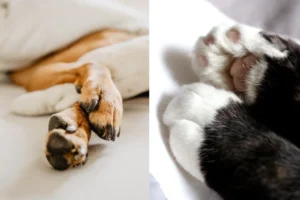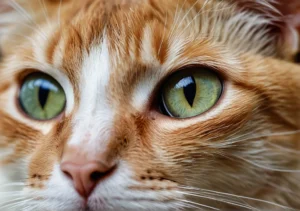Provide suitable scratching posts for paw exercise.
Use pet-safe moisturizers to keep their paw pads soft.
Consult with a veterinarian if you notice any unusual changes in their paw pads.
Keep their nails trimmed to prevent overgrowth.
Provide suitable scratching posts for paw exercise.
Use pet-safe moisturizers to keep their paw pads soft.
Consult with a veterinarian if you notice any unusual changes in their paw pads.
Regularly inspect their paw pads for any changes in color.
Keep their nails trimmed to prevent overgrowth.
Provide suitable scratching posts for paw exercise.
Use pet-safe moisturizers to keep their paw pads soft.
Consult with a veterinarian if you notice any unusual changes in their paw pads.
Regularly inspect their paw pads for any changes in color.
Keep their nails trimmed to prevent overgrowth.
Provide suitable scratching posts for paw exercise.
Use pet-safe moisturizers to keep their paw pads soft.
Consult with a veterinarian if you notice any unusual changes in their paw pads.
Cats are known for their unique and fascinating characteristics, from their playful antics to their curious nature. One intriguing aspect of cats that often sparks curiosity is the fact that their paw pads can come in different colors. Have you ever wondered why this is the case? Let’s explore the reasons behind why cats’ paws have varying colors.
Genetics Play a Role
Have you ever noticed that cats have different colored paw pads? Well, genetics play a crucial role in determining the hues of these cute little cushions. Just like how genes determine a cat’s fur color, they also influence the shade of their paw pads. Genes that control melanin production can result in variations in paw pad colors, ranging from pink and black to even multicolored pads.
Furthermore, the density of melanocytes, cells responsible for producing melanin, can differ among cat breeds, leading to variations in paw pad colors. While some cats have solid-colored pads, others may exhibit tiger-stripe patterns or mottling due to genetic factors. So, next time you admire your feline friend’s paws, remember that it’s all in their genes!
Breed Variations
When it comes to cat breeds, each one brings its own unique flair to the table – and this includes their paw pad colors. From Siamese’s distinctive dark paw pads to the British Shorthair’s pink cushions, each breed boasts its own signature pad hues. Some breeds, like the Sphynx, may even have pads that match their skin color, adding to their charm and individuality.
Keep in mind that breed variations go beyond just color – they can also influence the texture and shape of a cat’s paw pads. It’s fascinating to see how different breeds showcase such diverse characteristics, making each feline truly one-of-a-kind. So, the next time you find yourself admiring a cat’s paws, take a moment to appreciate the unique traits that make them special.
Melanin Production
Did you know that the color of a cat’s paw pads can be influenced by melanin production? Melanin is responsible for giving skin and hair their pigment, and it also plays a role in determining the color of a cat’s paw pads. Cats with darker paw pads have higher levels of melanin production, resulting in black or dark brown pads. On the other hand, cats with lighter paw pads have lower melanin production, leading to pink or light-colored pads. So, next time you look at your cat’s paws, remember that melanin is the key player in determining their color!
Environmental Factors
While melanin production is a major factor, environmental factors can also impact the color of a cat’s paw pads. Exposure to sunlight can darken a cat’s paw pads due to increased melanin production in response to UV rays. Additionally, temperature can also play a role, with colder climates potentially leading to lighter-colored paw pads. Keep in mind that genetics, age, and health can also influence the color of a cat’s paw pads. So, remember to consider both genetic and environmental factors when admiring your feline friend’s colorful paw pads!
- Unique Insight: Did you know that certain cat breeds, such as Siamese cats, are more likely to have distinct paw pad colors due to their genetic makeup? This unique genetic trait can result in paw pads that stand out in contrast to the rest of the cat’s coat color. So, if you have a Siamese cat, take a close look at their paw pads for an extra splash of color!
Health Indicators
Cat paw pads can come in various colors, and sometimes these colors can be indicative of the cat’s health. Pink paw pads are typically normal and healthy, but if you notice a change in color such as black, blue, or red, it could signal an underlying health issue that needs attention. Black paw pads can be a sign of hyperpigmentation, cancer, or even burns. Blue paw pads may indicate poor circulation or hypothermia. Red paw pads could be a sign of inflammation, infection, or allergies. It’s essential to keep an eye on your cat’s paw pad color and consult with a veterinarian if you notice any unusual changes to ensure your furry friend stays healthy and happy.
Fun Facts About Cat Paw Pads
Did you know that cat paw pads are often compared to fingerprints in humans? Each cat has a unique pattern of ridges and bumps on their paw pads, making them distinctive. Cat paw pads are super sensitive, containing numerous nerve endings that help cats navigate their environment. Cat paw pads are sweat glands, allowing them to sweat through their paws when they’re hot or stressed. Additionally, the color of a cat’s paw pads can change with age – kittens’ paw pads are usually pink and may darken as they grow older. Now you have a new appreciation for those adorable little paws and the fascinating features they possess!
Did you know that a cat’s paw pads can help regulate their body temperature? By sweating through their paws, cats can cool down when they’re feeling overheated. This unique ability makes their paw pads not only cute but also incredibly functional in keeping them comfortable in various conditions.
Celebrating Diversity in Cats
Cats are truly unique creatures, and their paw pad colors add to their charm. Just as our human fingerprints are distinct, each cat’s paw pads have their own special color and pattern. This diversity in paw pad colors celebrates the beauty and individuality of each cat. Whether your feline friend has pink, black, or even multicolored paw pads, it’s a wonderful reminder of the uniqueness of every cat out there. Next time you admire your cat’s paws, take a moment to appreciate the beautiful diversity that exists in these tiny, but impactful, details.
Unique Paw Pad Colors in Popular Cat Breeds
- Siamese: Siamese cats are known for their striking blue eyes and unique markings. These elegant felines often have dark paw pads that contrast beautifully with their light fur.
- Maine Coon: The Maine Coon breed is famous for its large size and friendly demeanor. Many Maine Coons have paw pads that match their fur color, whether it be white, black, or tabby.
- Sphynx: The hairless Sphynx cat may not have fur to show off, but their paw pads often exhibit a range of colors, from pink to black. These playful cats rock their unique paw pad hues with confidence, adding to their charm.
Remember, the next time you admire your cat’s paws, take a closer look at their unique colors – it’s just another delightful aspect of the incredible diversity found in our beloved feline companions.
How to Care for Your Cat’s Paws
Caring for your cat’s paws is essential to ensure their overall health and well-being. One crucial aspect is keeping an eye on the color of their paw pads. Just like the unique coat patterns of cats, their paw pads can also vary in color. The reasons behind this can be genetic or influenced by the pigmentation in their skin.
To properly care for your cat’s paws, start by regularly inspecting them for any signs of injury or irritation. Clean their paws gently with a damp cloth to remove dirt or debris. Trim their nails regularly to prevent overgrowth and discomfort. Pay attention to the color of their paw pads – any drastic changes could indicate an underlying health issue, and it’s best to consult with a veterinarian.
Another important aspect of paw care is providing your cat with suitable scratching posts to help maintain their claws and exercise their paws. This can prevent them from scratching furniture or other surfaces in your home. Additionally, consider using pet-safe moisturizers on their paw pads to keep them soft and prevent cracking.
Remember, a happy cat with healthy paws is a content companion. By taking the time to care for their paws properly, you’re not only ensuring their physical well-being but also strengthening the bond between you and your feline friend.
Tips for Caring for Your Cat’s Paws:
Regularly inspect their paw pads for any changes in color.
Keep their nails trimmed to prevent overgrowth.
Provide suitable scratching posts for paw exercise.
Use pet-safe moisturizers to keep their paw pads soft.
Consult with a veterinarian if you notice any unusual changes in their paw pads.
Alex, a passionate animal lover, has experience in training and understanding animal behavior. As a proud pet parent to two dogs and three cats, he founded AnimalReport.net to share insights from animal experts and expand his knowledge of the animal kingdom.




